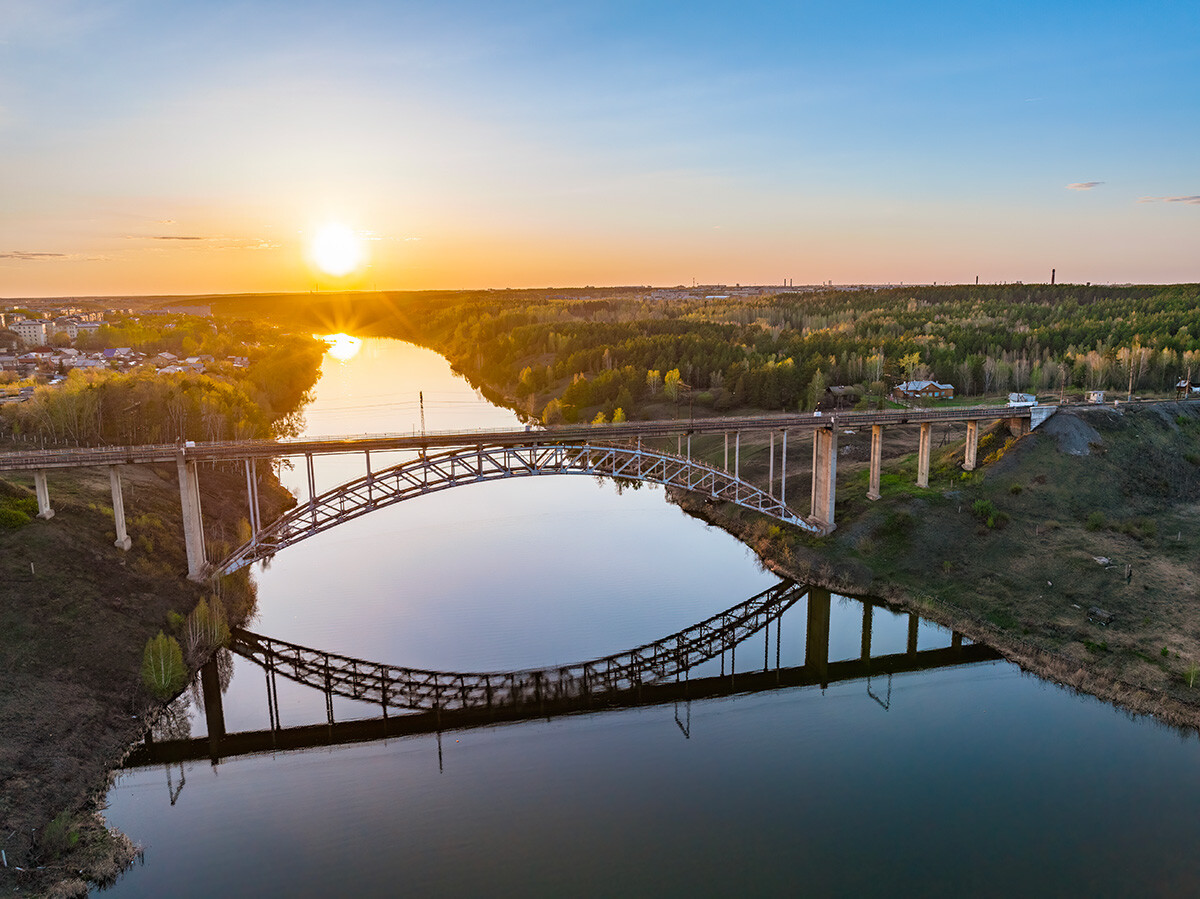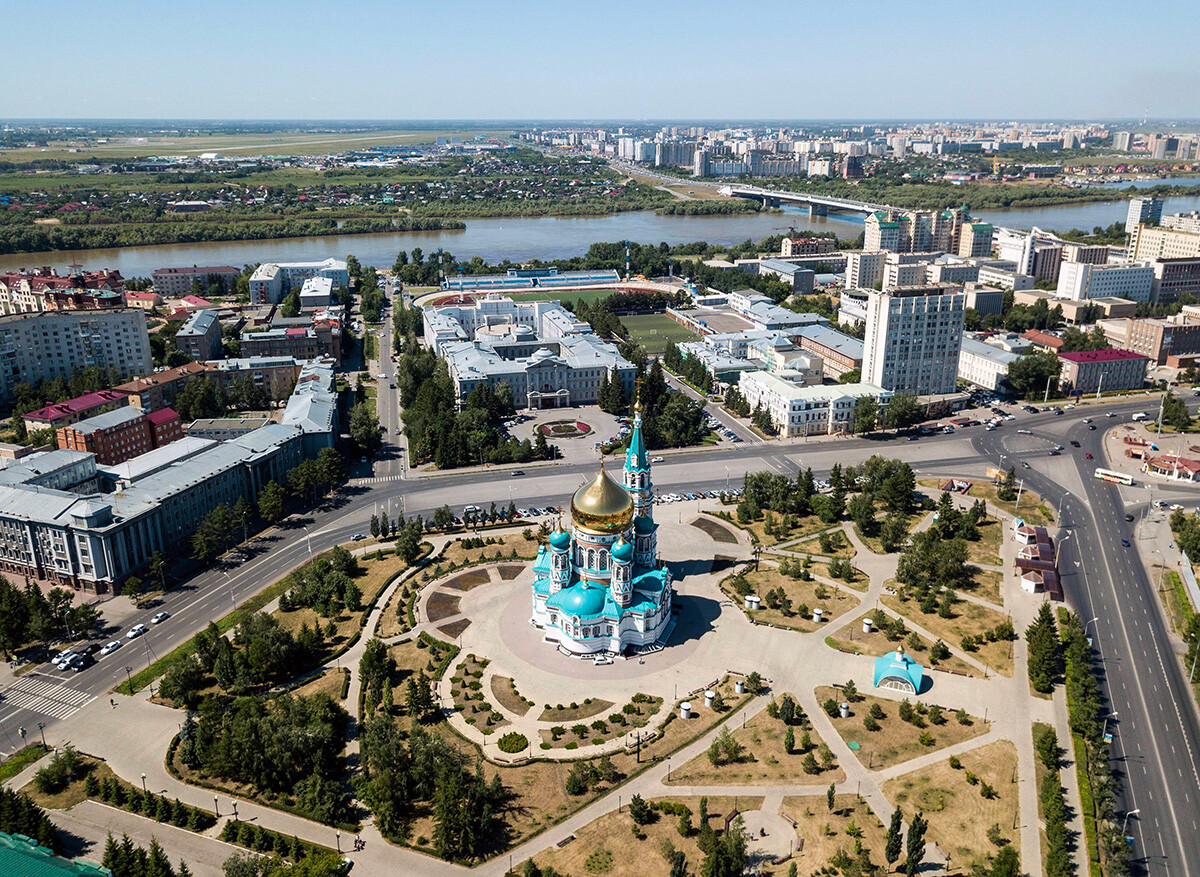How many Russian cities were built by Peter the Great's order?

According to the data from the Dmitry Likhachev Foundation, in total, the country has 120 settlements that relate to the activities of the first Russian emperor.
Below, we highlight all the largest and most well-known Russian cities that owe their origins to Peter the Great.
1683 – Syzran (Samara Region, Povolzhye)

Syzran was built as a fortified city, designed to protect the territories to the east of Moscow, as well as trade routes. The decree on its construction was signed by the juvenile Peter and his brother Ivan. Soon after, the defensive role of the city diminished: in the 18th century, the city turned into a large trade center of Povolzhye.
1698 – Taganrog (Rostov Region, Azov Sea, South Russia)

Taganrog appeared on the map after Peter’s second Azov campaign (1696), over the course of which Russian troops captured the Turkish fortress of Azov. But, it was situated at the mouth of the Don River and didn’t meet the needs of the Azov Fleet, which was created by the tsar in 1695: the ships couldn’t reach it, due to the shallow water. So, on the Tagany Rog cape, a harbor was built and the Troitskaya fortress was founded. It became the first Russian port on the open sea shore and the first naval base of Russia.
In her correspondence with Voltaire, Catherine the Great noted that Peter even considered moving the capital to the new fortress. However, already in 1711, under an agreement with the Turks, the fortress was demolished.
Taganrog began its second life in 1769.
1701 – Kamensk-Uralsky (Sverdlovsk Region, the Urals)

This city grew out of a settlement called Kamensky Zavod at the first Ural iron foundry, commissioned by the decree of Peter the Great on the banks of the rivers Kamenka and Iset. Russia entered the Great Northern War (1700-1721) and required iron to supply its army with cannons, so the tsar turned his attention to the ore-rich, but undeveloped Ural Mountains. Artillery cannons, cast at the Kamensky iron foundry, already participated in the Battle of Poltava on June 27, 1709.
1702 - Lodeynoye Pole (Leningrad Region, Northwest Russia)

This city, founded by the order of Peter the Great, was the descendant of ancient settlements, the inhabitants of which had always been engaged in shipbuilding. The tsar appreciated the local pine forests, so the construction of the Olonets shipyard began. It supplied the Russian fleet with ships that participated in the Great Northern War.
The name of this settlement comes from the name of the Lodeynoye pole plain (from the word ‘lodya’ in the northern pronunciation). In 1785, Catherine the Great granted the settlement the status of a city. Today, it’s often called the birthplace of the Baltic Fleet.
1703 – Petrozavodsk (Republic of Karelia, Northwest Russia)

The capital of the Republic of Karelia is as old as St. Petersburg. The city traces its history from the laying of the foundation stone of the Shuysky (later named Petrovsky) metallurgical and arms plant. This territory was rich with copper and iron ore deposits; because of this, an enterprise to produce cannons, required for the Great Northern War, was built. Soon, a sloboda (a settlement) of the same name appeared nearby – Petrovskie Zavody (‘Peter factories’). The city received its modern name in 1777 by the order of Empress Catherine the Great.
1703 – Lipetsk (Lipetsk Region, Central Russia, south of Moscow)

By the decree of Peter the Great the construction of iron making Lipsky (Lipetsky) plants began on these lands, as well as metallurgical and arms factories. These enterprises supplied the Voronezh shipyards with iron and ships – with cannons. At the same time, the plant’s sloboda, Lipskiye Zheleznye Zavody (‘Lipsky iron plants’), grew in size. On September 16, 1779, it was renamed to Lipetsk and granted the status of a city.
1704 - Novaya Ladoga (Leningrad Region, Northwest Russia)

Just like Lodeynoye Pole, it appeared as a settlement at a shipyard, built in 1702 by the decree of Peter the Great on the site of the Nikolo-Medvedsky Monastery. Two years later, by the order of the tsar, Novaya Ladoga (‘New Ladoga’) was founded. The city’s name is taken from the name of Lake Ladoga, on the shores of which the city stands.
However, another Ladoga had already existed in Russia since 753 – it was the residence of Rurik, the first Novgorodian prince, so Peter the Great renamed it to Staraya Ladoga (‘Old Ladoga’).
1709 – Biysk (Altai Territory, Siberia)

The history of Biysk began with the Bikatunsky ostrog (‘fortress’), founded by the order of Peter the Great at the confluence of the rivers Biya and Katun. It was meant to protect the south-eastern frontiers of the country and the trade routes to China and Mongolia. A year later, the ostrog was burned down by the armies of the Dzungar Khanate; in 1718, it was built anew 20 kilometers further up the Biya River and renamed Biyskaya Krepost (‘Biya Fortress’).
1716 – Omsk (Omsk Region, Siberia)

The city grew from the Omsk Fortress, founded by Peter’s associate, Ivan Buchholz, on the place where the Om River flows into the Irtysh River, to protect the southern borders from the raids of nomads – the Oirats. He was acting according to Peter’s decree on “building fortresses on the River Irtysh”.
1723 – Perm (Perm Territory, the Urals)

The history of Perm starts with the foundation of the Yegoshikhinsky copper-smelting works. The tsar’s associate, Vasily Tatishchev, was its founder, who was ordered by Peter the Great to build plants in the Urals to smelt copper and silver. Perm received its city status in 1781.
1723 – Yekaterinburg (Sverdlovsk Region, the Urals)

This city appeared at an iron-making plant built on the Iset River, the largest plant in Europe at the time. Just like with Perm, Tatishchev is considered the “founding father” of the city, as well as mining engineer Wilhelm de Gennin. The construction of the plant and the fortress began by the order of Peter the Great, while the city received its name in honor of his spouse, Empress Catherine I.

